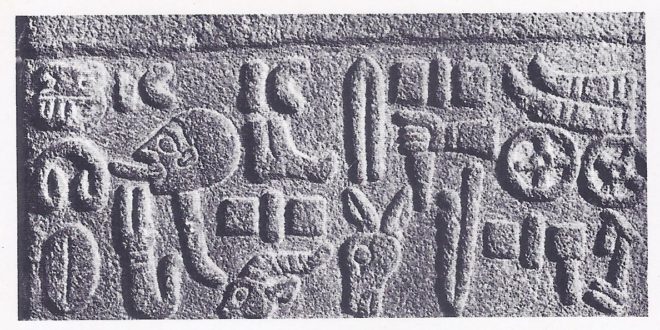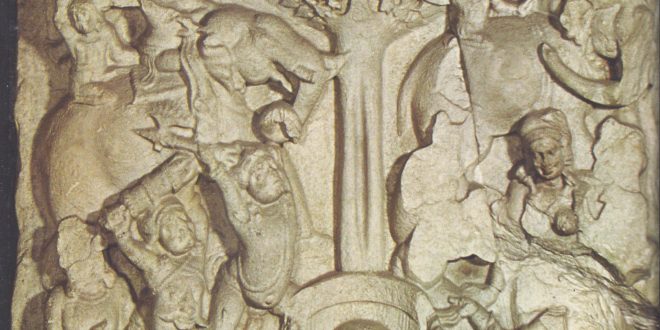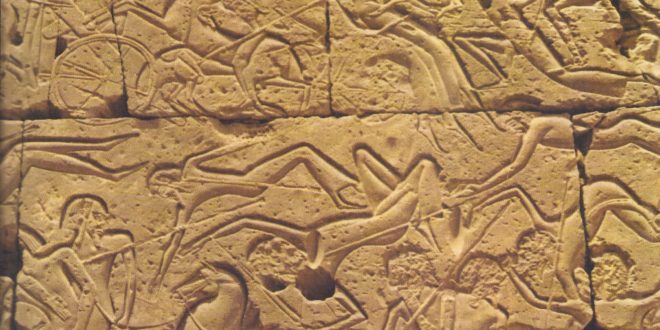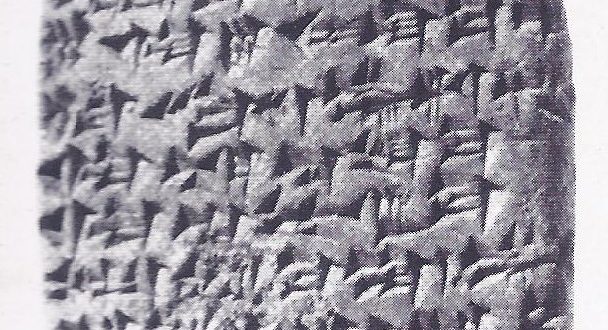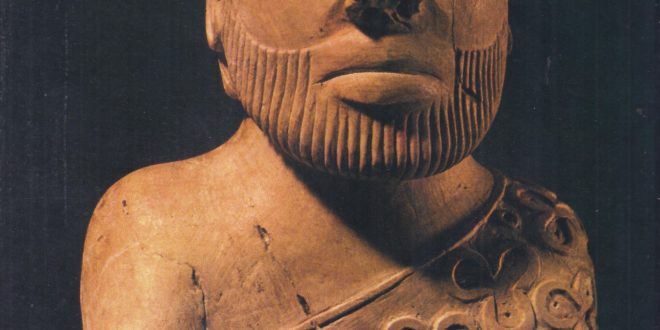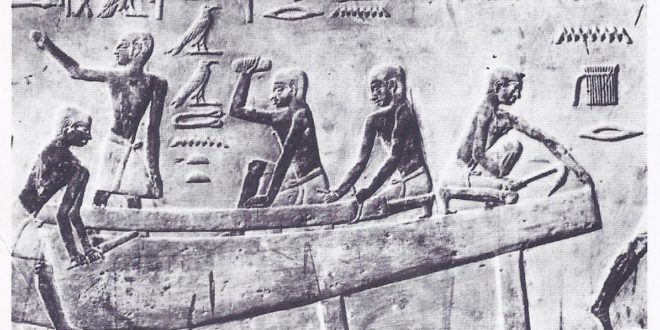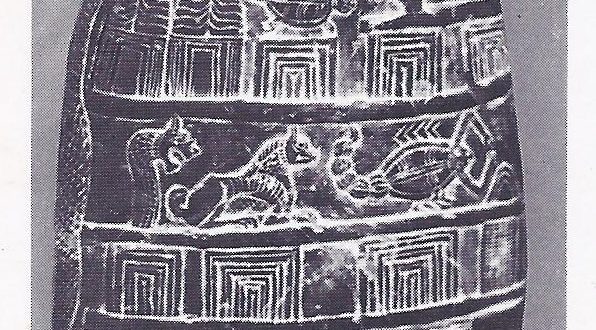The Buddha as he came to be known, was a young man, Gautama, who followed the usual pursuits of someone of his class. He hunted, played games, feasted and had many friends. He also inspired great personal devotion, which was to stand him in good stead later. Growing discontented with his life and determined to find enlightenment, he renounced his wealth and left Kapilavastu in order to lead an ascetic life, but Gautama found that this kind of existence, practiced in isolation, did not satisfy him. He believed that compassion for his fellow men should find practical expression. He returned to Gaya where he became the ‘fully-awakened”, or Buddha and he began to teach. Although Buddhism — the faith he founded — had not become supreme in India, it won many followers in Ceylon, Burma, Thailand, Tibet and played a crucial role in the development of China and Japan. Shakravartin — “he who turns the wheel” — the ruler of the world, is shown in this marble relief of the school of Amaravati, dating from the first century B.C. or A.D. In the forested foothills of the Himalayas, in the region that is now central Nepal, there was born around the year 563 B.C. a man whose life and teachings were to have a profound influence throughout Asia and beyond. His personal name was Siddhartha, but he was known also as Gautama, the name of the family group to which he belonged. The Gautama family were Sakyas, one of a number of clans who inhabited the area between the river Ganges and the Himalayas, roughly to the northeast and northwest of the modern city of Patna. The young Gautama, who was later also to be called Sakyamuni, or “Sage of the Sakyas,” grew up in the hill town of Kapilavastu. …
Read More »